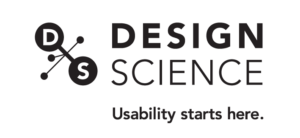Design Science Attends HFES Annual Meeting
From October 9-13 more than 1,300 people from around the world gathered in Austin, Texas, to attend the 2017 Annual Meeting for the Human Factors and Ergonomics Society (HFES). Read more
From October 9-13 more than 1,300 people from around the world gathered in Austin, Texas, to attend the 2017 Annual Meeting for the Human Factors and Ergonomics Society (HFES). Read more
If you are attending the 3rd Annual Human Factors Excellence for Medical Device Design conference and picked up one of our crossword puzzles, you’re in the right place!
As a company that is perpetually seeking to make products highly usable, it’s natural that we would apply that same scrutiny to how our own human factors usability studies are conducted. For the past few years, we’ve been exploring one specifically onerous aspect of usability studies: the ubiquitous pen and paper interview guide. Read more
Take me back to the Big Easy! We had a great time in NOLA at the HFES conference March 5-8, 2017. We saw some excellent presentations and enjoyed delicious New Orleans cuisine. If you missed our poster Using Data-Driven Research Techniques to Define Better Product Requirements, you can download our HFES poster here. Read more
The HIMSS 2017 conference is “the year’s largest and most important healthcare IT conference in the United States” and brings together executives, clinicians, IT professionals, and more for a week of networking, knowledge-sharing, and forward-thinking. Read more
The study of human anatomy using cadavers dates back to roughly 300 BC, when the Greek physician Herophilus started to use dissection to understand human anatomy. Since then, cadavers have served as a major aid to education and research. For medical students learning anatomy and surgeons perfecting their instrument techniques, cadavers provide physical training materials. What’s more, human cadaver tissue can be used to gain important information about product development and use on human tissue before the device is used in clinical settings. Read more
Human behavior can be hard to predict and even harder to explain. Study participants will often manage to do similar things in different ways, and they’ll rarely work with the same tools with equal proficiency.
What seems chance, or random, for one participant may be choice, or regular, for another. But the difference between chance and choice is critical when evaluating medical devices. Read more
As a recent addition to the Design Science team, I know that there is a steep learning curve when it comes to the specific tools and skills needed for usability testing. There’s a lot to learn, from the nuances of interview styles and follow-up questioning to the requirements of study documentation and reporting. Thankfully, an effective training program can make all the difference when navigating this curve.
What makes a good training program? How do you prepare for one? Are all trainings created equal? Read more
The recent HFES Symposium in San Diego brought together human factors’ professionals from across the globe to discuss the future of the field. In line with the theme of this year’s conference—Shaping the Future—attendees presented on new lines of research, applications of technology, and opportunities to enhance the safety of medical devices and health care practices. Read more
Conducting usability studies abroad is an exciting opportunity for researchers. For those who get to travel to new places, you get to see another part of the world, eat new foods, and learn new customs. There are many resources available with tips and suggestions on how to plan an international trip—but planning a vacation abroad and planning a usability study abroad are two different things. Read more
123 S. Broad Street, Suite 1350
Philadelphia, PA 19109
T 215.627.4122
F 215.627.4335
909 Davis Street, Suite 470
Evanston, IL 60201
T 312.584.0240
F 215.627.4335
Blütenstraße 15
80799 München
Germany
T +49.(0)178.876.7277
We conduct rigorous research to optimize the usability, safety, and customer appeal of products. Contact us to discuss a project today.
